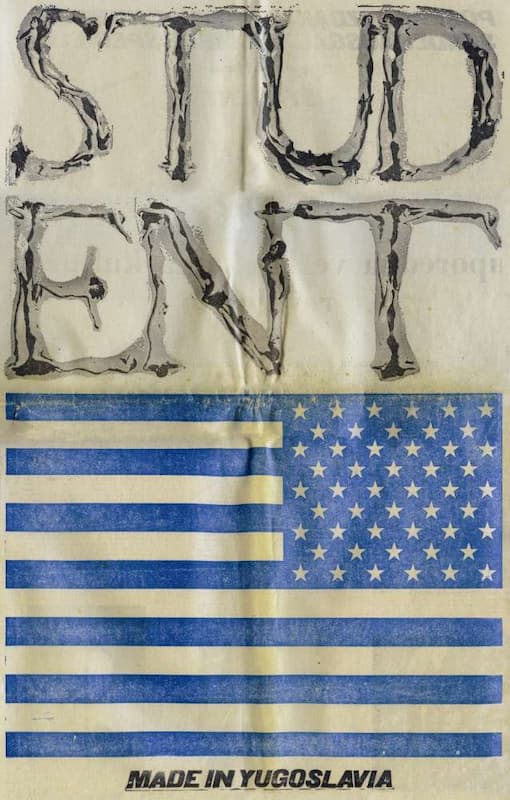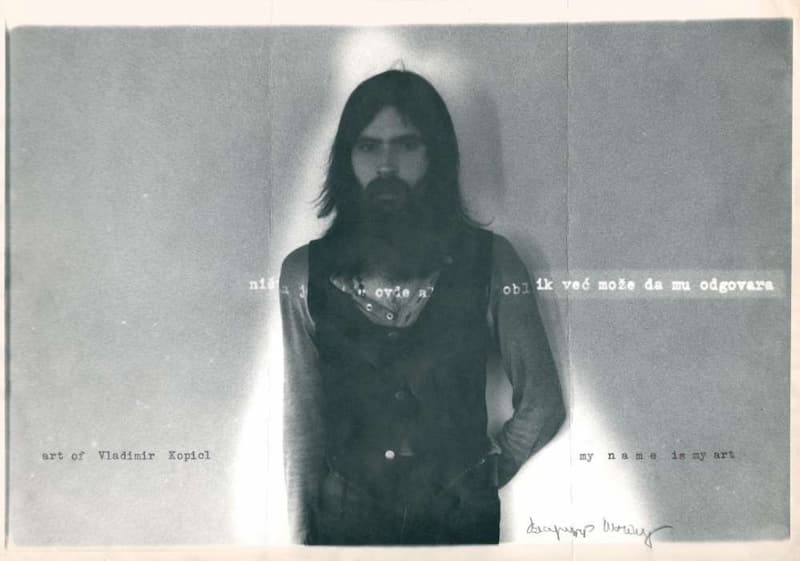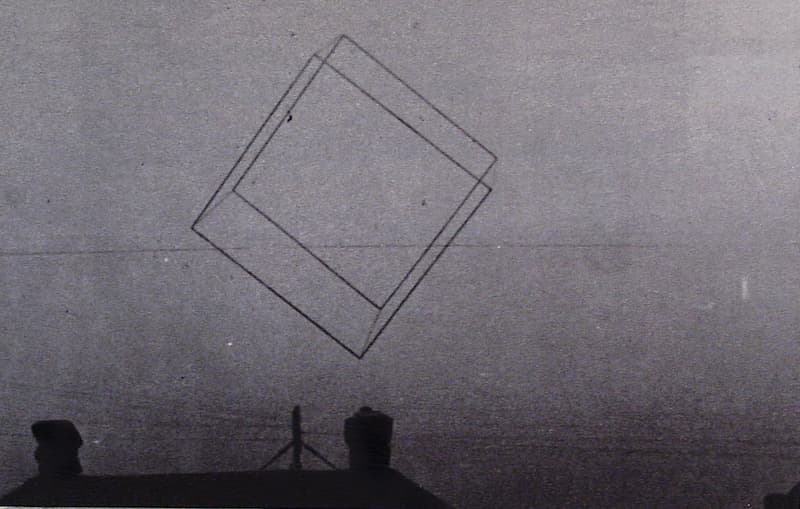This is just one of the moments that illustrate the life and death of the Novi Sad neo-avant-garde, a conceptual art movement that defined the period from the late 60s and the 70s in this city, and kept up to date with the international artistic tendencies of the time. There are many such stories – some of the key figures of this movement, you might bump into while taking a walk, see at the local bookstore drinking their first-morning coffee, or choosing new releases of records – others are immortalised in various galleries, museums and private collections, while there are also those who, unfortunately, left Novi Sad, or stopped creating.

The Flourishing of the Novi Sad Alternative Scene
The phenomenon of the Novi Sad neo-avant-garde was not unique, that is, not an isolated case – it belonged to a wider context of similar collectives that followed newly established artistic practices such as happenings, land art, performance and body art, language experiments, etc., present in other Yugoslav cities such as Belgrade, Zagreb, Subotica, Zrenjanin, Ljubljana, etc. Nevertheless, in the 1970s, Novi Sad was relevant on the cultural map, primarily thanks to the famous Tribina mladih (today’s Cultural Centre of Novi Sad in Katolička Porta), a youth centre that cultivated radical breakthroughs in the field of art, as well as both the Index magazine published by Matica Srpska and Polja magazine, which, perhaps paradoxically, were oriented towards alternative and progressive artistic tendencies and gathered artists prone to the provocation of the aesthetic norms of the time. Tribina mladih thus became a symbol of a new, different, and dare we say, for the time, anti-establishment art. It was a symbolic meeting place from which the KÔD groups emerged (Branko Andrić, Slavko Bogdanović, Ferenc Kiš-Novak, Janez Kocijančić, Miroslav Mandić, Mirko Radojičić, Slobodan Tišma and Peđa Vranešević), Januar, Februar, and the Grupa (Ǝ (Čedomir Drča, Vladimir Kopicl, Ana Raković and Miša Živanović), who are from contemporary point of view, considered eminent representatives of the Novi Sad neo-avant-garde.

Young Artists’ Revolt and the End of an Era
Carried by the wave of student demonstrations from the now famous and ground-breaking 1968, the artworks of these collectives and individuals that we recognise today as neo-avant-garde were rooted in the moment of their creation – they asked questions, gave new and different answers, opened up new fields of play (in form, language, politics), experimented and tried to see how far they could go in their works. They were defiant and provocative, but also thoughtful. They contextualised and connected with the international cultural scene – it is important to note that the KÔD group participated on the international scene by exhibiting at the Paris Biennale (albeit in a smaller capacity, since the very invitation to this art festival was perceived differently from the artistic point of view of the members), a place of legitimacy in a sense.
In addition to excitement, chaos, courage, (and, hopefully, fun), which were certainly part of the practice of these mini-collectives, the common denominator would be youthful rebellion, a kind of transgression, which will bring them into disfavour of the cultural policy and regime of the time – neo-avant-garde art rested on transgression, experiment, and deconstruction of existing forms. In other words, it was threatening in its novum and boldness. Critical of the oppressive dogmatic views of the time regarding both art and politics, like many vanguardists before them, the protagonists of the Novi Sad scene were gradually side-lined – some were removed from editor spots of the Tribina mladih, others were banned from working, while some were marginalised or revolted to the extent that made them give up on creating art altogether. Many still participate in cultural life, either institutionally or from the alternative scene. Most of the ones who stayed in Novi Sad drink their coffee at the same bookstore. But then again, the nature of avant-garde trends is that no sooner have they flared up than they die: historical avant-gardes were a response to a period of social turmoil – they operated in that kind of liminal space, which sooner or later disappears, but behind which a trace remains, even as a poster on the wall of a favourite pub.

Novi Sad Avant-Garde Lives On!
The spirit of the avant-garde will revive again in Novi Sad, through the rich Other? Europe programme. We invite you to discover the phenomenon of Novi Sad and international neo-avant-garde at the exhibition Milky way, which will be the crown jewel of the European Capital of Culture year in the coming days. The multimedia exhibition awaits us from 25 November at three locations in the city – at the Museum of Contemporary Art of Vojvodina, the CCNS Art Saloon, as well as in the District. Feel the powerful influence of the avant-garde and rebellious voices. This great exhibition will close off the ECoC title year and show the influences and reflections of the widely known Novi Sad neo-avant-garde movement, placing Novi Sad on the European art map. See the great works of over 50 contemporary artists, and art collectives from the country and abroad, such as Bill Viola, one of the leading contemporary artists who exhibited at the MoMA, Tate and Whitney Museums, as well as the work Irritation – There is a Criminal Touch to Art by a conceptual German artist, one of the pioneers of performance art, body art and Polaroid photography, Ulay, which will be shown in cooperation with the Ulay Foundation from Ljubljana. The exhibition was curated by Sanja Kojić Mladenov. Watch the video below.
*The artistic duo Dei Leči consisted of Bora Vitorac and Dragoljub Pavlov. Vujica Rešin Tucić, one of the most prominent neo-avant-garde Yugoslav artists (from Zrenjanin) considered them pioneers of new art forms such as happenings, performance, and the art of actionism.
Author: Marina Savić
Photo: avantgarde-museum.com, Promo/ECoC







